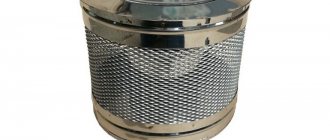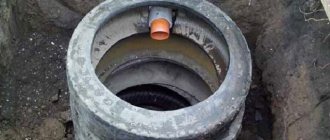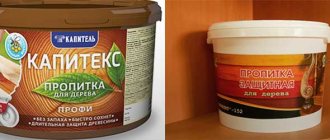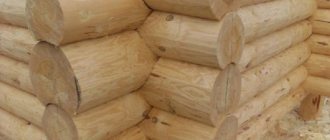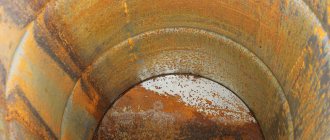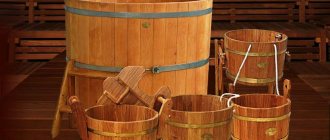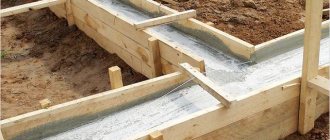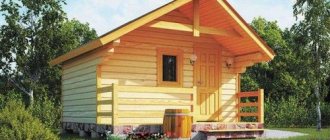Russian baths are famous for their special atmosphere, which surrounds lovers of bath procedures with gentle or vigorous steam. Both to create a specific aura of the steam room and for the washing process, one of the main bath components is needed - water. It can be “trained” in buckets, heated in a tank and scooped with a ladle, watering the heater and filling the bowls. However, it is much more convenient to lay a water supply and install a tap in the bathhouse, so that the process of preparing for visiting it does not tire the household, and during the hygienic procedure there is no threat of accidental burns and serious injuries.
The faucet is one of the oldest inventions of plumbing, serving as a water supply organ long before the global introduction of water pipes. In principle, we are still a long way from a comprehensive plumbing revolution. Many villages and holiday villages manage in the old fashioned way without highways transporting water. True, their farms, which have not been modernized, still have taps. Antique devices with spool and cork samovar mechanisms equip washstands, drinking water containers and bath tanks.
The operating principle of primitive plumbing fixtures is simple. A plug or spool locks and unlocks the flow of water. They are made in the form of a conical bushing or ball with a through hole along one of the horizontal axes. The handle of a simple faucet is rigidly connected to the plug and spool. We turned the handle 90º and opened the “channel” by installing a hole opposite both tap pipes. We returned it to its previous position and closed the water passage with a steel, cast iron, bronze or brass “barrel” of the critical part. The power of the flow can be controlled only by varying the angle of rotation. However, such a tap for a tank in a bathhouse is a completely suitable solution, because this is already a kind of mechanization of water supply.
There are not so many design varieties in the crane family. Similar to the simple device described above, any of them must:
- regulate the flow strength and water consumption;
- ensure easy opening and closing;
- effectively, without leaks, restrain the liquid medium pressing on it, moving through a water supply system or limited by a container.
By the way, samovar devices became the prototype of ball valves, which are now installed at control points of pipelines, disk valves, which are very popular in plumbing, and less popular cork valves.
The conclusion suggested itself: it is advisable to use a bath faucet, regardless of the degree of improvement of the site, because:
- if there is no water supply system, it will ensure a uniform supply of water from the tank without scalding users and unwisely spilling liters on the floor;
- If the owner of a country property has taken care of and installed an autonomous water supply system, not only a faucet, but also a full set of water supply fittings will be required for proper operation of the system.
Plumbing fittings used to provide a personal bathhouse with water include water intake, shut-off, mixing and safety devices. We colloquially call all of them cranes. More precisely, we call a tap what we hold in our hands when we block or open the path to a flow. Now let’s dispel misconceptions and understand the purpose of all types of devices for permanent and temporary water supply systems.
The water supply system will not be able to operate normally if its design does not include a complete list of pipeline fittings. Without taps, valves, drain and check valves, it will be impossible to regulate the direction and volume of water supply, restrain pressure, repair and preserve the system.
Representatives of water fittings are externally familiar to us, because mostly the hands of the owners come into contact with them. Due to intensive use, they are also repaired and replaced at frequent intervals. The options that are actively used in everyday life include valve, spindle, disk and plug taps, the specifics of which are worth familiarizing yourself with.
The classification is based on the difference in the design of the main working body - the head. The metal bodies of all types of taps are a conventional casting with threads on both sides. One of the threads is used to fix the head, the second is used to attach it to the supply pipe. Because water fittings are classified as interchangeable devices; any type of head can be installed in a body of a suitable model.
A specific element of the body is the spout, which sets the direction of the stream. In most cases, it is this that determines the choice, depending on the preferences of the owners and spatial conditions. The detail is important, but attention should be focused on the design differences of the heads.
- 2 Specifics of spindle heads
- 3 Features of cone plugs
- 4 Faucets with ceramic discs
- 5 Shut-off valves for autonomous water supply
- 6 Why do we need a drain valve?
Bronze model
Bronze bath taps are controlled using valves, spindles, disks and plugs. Hence their classification. They also differ in the type of mixer head. The housings are made of metal with double-sided threads and a supply pipe. In addition to the replaceable fittings with a head, the faucet has a nose that determines the direction of the water jet. When purchasing, you need to pay attention to the material from which the faucet is made, its characteristics, spout, design, price and functionality. For example, one made of brass is more expensive than models made of stainless steel, but it is stronger and more functional in operation.
Adviсe
When purchasing a bath faucet, you need to pay special attention to its functioning: the processes of tightening and unscrewing. They should be simple and convenient. The presence of any jams is not acceptable.
The need to supply bathhouses with comfortable equipment for drawing water leads their owners to the need to purchase practical and easy-to-use taps equipped with one- or two-lever controls. The spout of bath taps should be short. Their designs must contain a minimum number of moving elements. Such design features ensure increased reliability of bath faucets and their greater suitability for repair.
Valve model
Valve taps have a head with an external thread and an internal thread. Thanks to the external thread, you can mount the valve head, and with the help of the internal thread, you can ensure the movement of the rod fixed in the regulated section in a spiral. As a result of such manipulations, the valve, having fixed the stem at the bottom, can control the position of the seat, that is, the hole for the flow of liquid. From the outside, the rod can be controlled using a conventional handle. For strength, the saddle is equipped with a gasket, a structure that ensures that the mixer adheres to the saddle. To stop the flow of water, the head body is sealed using a special packing and tightly compressed by a sleeve on the side where the device handle is located.
The features of valve models include simple and cheap repairs during repairs: the mechanism is easy to disassemble, the prices for parts are low. They differ from other varieties in their high wear resistance and reliability. In addition, such products can withstand high water pressure. But it is worth keeping in mind that if the thread is damaged, the device becomes unusable.
Valve taps and their features
Valve taps (another name is taps with a retractable spindle) are designed quite simply - the head, which has external and internal threads, can be twisted and unscrewed. The external thread allows the head to be mounted in the faucet, and the internal thread ensures that the rod on which the valve is mounted moves along a spiral path.
As a result of such manipulations, the valve, rigidly fixed to the lower edge of the stem, opens and closes the seat - the hole for the passage of water. From the outside, the rod is controlled by a familiar handle.
For reliability, the saddle is equipped with a gasket - this design ensures the tightest possible fit of the working element of the crane to the saddle. To prevent water from passing through the tap when it is in the closed position, the head body is filled with a special packing. The seal is pressed tightly by a bushing located on the side of the faucet handle.
Some of the most common problems associated with valves include the following:
- Wear of the gaskets, as a result of which water begins to actively leak through a loosely closed hole, and the water supply itself becomes very rattling;
- Wear of the stuffing box, which is determined by the flow of water in the gap between the bushing and the spindle;
- Deformation of the seats, due to which water constantly flows out of the tap, regardless of the position of the handle.
Such problems are quite unpleasant, but their prevalence has allowed us to develop several simple solutions to eliminate the problems that arise. In addition, valve taps are quite simple and reliable - it is almost impossible to break them irrevocably even with self-repair.
The repair process boils down to the following actions, which directly depend on the previously diagnosed problem:
- Replacing the gasket . First, the stem is removed from the tap, from which the worn gasket must be removed. A new one is installed in its place, which is slightly larger in size than the hole in the socket. To achieve maximum tightness, it is worth chamfering the outside of the new gasket before installation. It is also worth considering that rubber gaskets are used for cold water, and leather gaskets for hot water.
- Replacing the stuffing box . Before work, you need to remove the flywheel and bushing. When these operations are completed, the worn seal is removed, after which the new oil seal is filled with foam or fluoroplastic. The material must be laid in accordance with the direction of the thread. The spindle is wrapped with twine or thin twine for maximum density. To make the job a little easier, you can do without removing the old packing. In any case, fresh material should be treated with oil - this will increase its resistance to moisture.
- Repair of deformed saddles . The first step is to disassemble the faucet and dry it thoroughly. Circles cut from sandpaper are inserted into the dried nest. Next, you need to use a rod to scroll the paper in all directions until the surface becomes ground in.
The simplicity of valve taps is an important advantage that is highly appreciated by amateurs, because it is very easy to install and repair such a system. The only difficulty that can be encountered when using such mechanisms is damage to the threads. If the thread breaks, it would be better to replace the faucet with a new one in order to avoid the rather delicate work of creating a new thread.
You also need to remember that the scope is limited to systems operating at pressure levels exceeding 0.3 kgf/cm2.
Design differences
Valves with spindle heads do not differ in operation from valve models. The only difference is the movement of the valve stem. During operation of the device, a stationary rod is observed. The model works thanks to thread cutting located inside the rod. Unlike other varieties, spindle taps are distinguished by their quality and convenience. However, they also cannot be repaired if the threads are damaged.
Cone types of taps have a primitive operating scheme. The spindle is a plug with slots and a hole through which the liquid flows. By turning the handle, both pipe connections are aligned. When you turn the handle in the opposite direction, the water turns off.
Such models have their own characteristics
- Housings are made only from cast iron, and structural working elements are made from steel alloys, flexible cast iron or bronze.
- The handle is formed only from wood or plastic.
- The device head can only be repaired by tightening the nut.
Models with ceramic discs are very similar in design to cork discs, the difference is in the module that replaces the cork. It fits tightly to part of the disk and when, when moving the handle, the tap displaces the hole of the ceramic spindle with the body, the liquid begins to flow. The difference between these models is the highly sensitive handle, as well as its handles, which are reduced several times. Therefore, the jet can be controlled with a light touch of your fingers.
The advantages of such devices are reliability, tightness, low price, the ability to install servos and durability. The main disadvantage is the need for clean water. The faucet quickly stops working if the water is dirty. During repairs, you will need to replace the mobile module.
Bath taps with wooden handle
Bath taps with wooden handles are quite popular due to the advantages of wood over other materials.
- Sanded and treated wood is pleasant to the touch.
- Wood is a good heat insulator, so the handle will be warm and you won’t get burned on it.
- Wood is easy to process, any type of handle can be constructed from it, and the handle can be decorated with carvings.
- The wooden handle will fit perfectly into the decor of a bathhouse or sauna and will be an additional source of a pleasant smell indoors.
However, bath faucets with a wooden handle have their drawbacks. Wood is a fragile material compared to metal; a wooden handle can quickly become unusable. Therefore, it is better to buy a faucet with a handle made of hardwood.
How to choose a faucet
If you need to purchase a faucet for a samovar, then you should consider several important recommendations:
| Stylistic unity | The faucet must be combined with the samovar, so it is important to find exactly the version that will fit organically into the design and will not be dissonant with the container. It’s great if the decorative elements match each other, especially for the faucet key |
| Appropriate coating | You can find different options: golden, silver and other types of surfaces. It is unnecessary to remind that the color should be the same; a faucet whose coating is not the same as that of a samovar looks ridiculous and spoils the entire appearance |
| Match size | This factor is especially important if only a key is purchased; it has a cone-shaped shape, therefore, the more accurately you measure the required parameters, the less you will have to bring the element to the desired configuration. Price in this case is of secondary importance - the main thing is the exact match of all elements |
| Quality | It is quite simple to determine how well a product is made: firstly, the weight of each element should be noticeable, secondly, the quality of workmanship should not cause any complaints due to flaws and negligence, and thirdly, it is necessary to carefully examine the decorative coating; it should be uniform without inclusions and spots |
The color of samovars differs quite strongly, and the coating can be either glossy or matte, so it is important to find the appropriate faucet
Bath mixer
When choosing a faucet for a bath or sauna, you need to give preference to materials such as titanium, brass and stainless steel. Brass makes the faucet durable, since zinc is considered the main alloying component in its composition. In addition, brass protects the faucet from corrosion. Titanium makes the product reliable and wear-resistant, and stainless steel makes it easy to use. But it cannot be called wear-resistant during friction.
When choosing a bath mixer, it is better not to choose models made of silumin. This is a synthetic, fragile alloy, subject to corrosion and rapid wear in contaminated water.
Other fittings
To supply water in the bathhouse, in addition to taps, pipes, fittings, fittings, water outlets and mixers are used. To ensure uninterrupted operation of water, carry out preventive maintenance and repair, each device must have shut-off valves installed that allow you to shut off the water, find the source of the breakdown and eliminate it. In this case, the valves must be made of stainless steel, brass or titanium.
Thanks to shut-off valves, the flow of water is blocked for repairing pipes and plumbing fixtures. If the valves are open, repairs will not be possible. Shut-off valves must be installed:
- at the beginning of the section;
- in the place where the bathhouse will be located;
- in all places where the pipeline branches off;
- at the beginning of any mixer;
- in places where there are racks located vertically.
By design, straight-through, angle or direct-flow valves for water supply systems resemble spindles. The valve can be connected to the stem using ball fittings.
Shut-off valves are distinguished by the fact that they do not require constant repair. The problem that has arisen can be eliminated in the same way as in the case of a valve mixer.
Attention! Valves need to be maintained carefully, as if not properly maintained they can fail and need to be replaced.
Drain taps are the main purpose of emptying the pipeline. They are required in cold weather, when it is necessary to drain all the water due to the approach of autumn, and in the summer, when it is necessary to carry out the opposite process. Every person uses them every day, washing in the sink, taking a bath, etc. Such devices are created from brass, stainless steel and plastic.
Drain mixers need to be installed:
- in an independently functioning water supply system;
- at the beginning of all devices;
- At the beginning of the pipes entering the room.
They are indispensable in various situations, for example, automatic drain faucets empty the pipeline so that you can use the water intake system in winter.
Important! Instead of a simple drain mixer, an electromagnetic type of valve is more often used. It is considered the best due to its remote control. However, it costs significantly more.
Why do you need a drain valve?
Drainage devices are required for the conservation of all types of autonomous water supply systems, i.e. for draining water from equipment and pipelines. The summer water supply system is preserved at the end of the summer season, the winter one every time the site is left for a long time. Install drainage devices:
- at the beginning of the outer line;
- in front of each device;
- before the water supply enters the building.
Now, instead of a conventional drain device, you can use a solenoid valve, which is controlled remotely. Once we’ve touched on the valves, let’s remember about the reverse options used to prevent the reverse flow of water. They are required before the pump.
These are not all plumbing tricks that facilitate the operation of the system and guarantee its trouble-free operation. We were talking only about cranes. We are sure that the zealous reader will answer the question “do you need a faucet in a bathhouse” in the affirmative?
Rate this article:
- 5
- 4
- 3
- 2
- 1
(1 vote, average: 5 out of 5)
Share with your friends!
